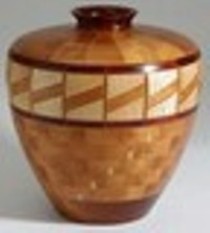
The History of Woodturning
The history of woodturning shows that this classic woodworking art was practiced thousands of years ago. It is the process of building, making or carving something by the use of wood. There were two significant historic civilizations that used woodworking; the Chinese and the Egyptians. Woodworking is evident on the works made by both civilizations. Egyptians had drawings and pieces of furniture that have been preserved in tombs. It was also found that the coffins in the tombs were wood turned.
The Chinese also had furniture made from turned wood. It was believed that it originated from Lu ban and his lovely spouse, named Lady Yun, from the Autumn as well as the Spring period. Lu Ban was considered to have brought the use of plane, chalk line and some other tools to China.
Different Forms of Woodworking: A form of woodworking which evolved after thousands of years is woodturning. Dated to around 1300 BC, Egyptians were considered to have discovered woodturning. Two persons were responsible for working a lathe in those days. The first person would turn the wood with a rope, while the second one used the sharp tools that would cut shapes in the wood. This procedure is also called two-person lathe. After some time, the process of woodturning used by Egyptians was developed by the Romans.
Adding the Turning Bow: To make the work much easier, a turning bow was added. The turning bow discovered and used by the Germans. This meant that the craftsman could use one foot to turn the lathe, freeing up his hands to use the tools for designing the spinning timber. A pedal was then used during the Middle Ages. This made the work easier and faster, though it was still hard work. The pedal that was used during that time was connected to a pole; a straight-grained sapling. Later a system known as spring pole lathe was used. These lathes were commonly used during the early 20th century.
In the Industrial Revolution: During the 18th and 19th century, also known as the Industrial Revolution, significant changes occurred with regards to agriculture, manufacturing, mining, and transport. This period also had an effect on the use of the lathe which became motorized. This allowed the turned items to be created much more quickly. Further, the motorized lathe also produced greater rotational speed for the wood, the effect of which was that to easily and quickly produce a high quality of work. Yet, compared to these days, there were less art and speed back then.
Sources of Power: The old spindle as well as the bowl lathes that were used had different sources of power - viz. manpower. These speeds were very slow speeds - even the fastest of them was still slow when compared to motorized lathes. Nowadays, such slow speeds are rare; rather the speed is likely to be great enough to fling even the tiniest work right off the lathe, especially if it has not been securely fastened. It is important then in discovering the art as well as the proper skill of woodturning to make sure that all the techniques and practices are safe and secure so that the person will be protected from injury.
New Discoveries in Woodturning: Almost every year people try to make new discoveries in woodturning. Definitely, woodturning has evolved and become a more highly skilled art form than it once was. And though the number of machines and equipment we have today is wider than was possible in the early days of woodturning, it is still important to appreciate the work of art in any simple way.
Despite the fact that the products produced from woodturning are no longer necessary because they are made from man-made materials, the ability to still create them from the process of woodturning will stay strong and will still continue for as long as there are people who believe in and appreciate the artistic and useful items of woodturning.
Greg has been writing articles for over 4 years. Please visit his latest website about woodworking projects at Woodturning Project Guide, with information on the History of Woodturning, as well as ideas and discussions that any woodturning enthusiast would be interested in.
Article Source: http://EzineArticles.com/?expert=Greg_Parsons
Trying to find Painters and decorators london cloud-painting ? Check out this page: https://www.cloud-painting.com

